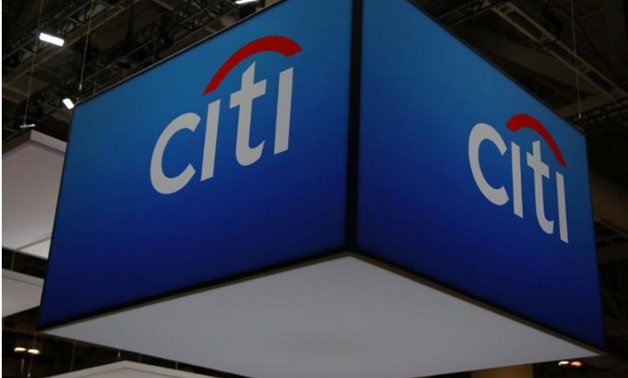
The Citigroup Inc (Citi) logo is seen at the SIBOS banking and financial conference in Toronto, Ontario, Canada October 19, 2017. Picture taken October 19, 2017. REUTERS/Chris Helgren
NEW YORK - 9 July 2018: Citigroup Inc is facing a unique dilemma among the four largest U.S. banks: it is light on deposits from individuals, an important funding source that costs little and tends to stick around.
While big rivals grew deposits dramatically after the 2007-2009 financial crisis from their broad networks of branches, Citigroup backed out of all but six U.S. cities and closed one-third of its branches.
The bank is now trying to up its game with a new app it plans to begin marketing in the third quarter. Executives hope it can lure deposits without opening new branches, acquiring a rival or beating competitors’ rates – three ways to collect deposits with their own costs and risks.
“People are willing to switch to a bank that is able to provide this kind of mobile-first experience,” David Chubak, head of global retail banking and mortgage, said in a statement, citing customer research Citigroup conducted.
The app, which does not have a name, will augment the bank’s push to expand its wealth management business, he said.
Competing for deposits is important as interest rates rise. When banks start reporting second-quarter results on Friday, investors will be closely watching deposit levels and what they cost.
The stakes are high for Citigroup, which is less profitable than rivals and trying to meet elusive financial targets set by Chief Executive Officer Michael Corbat.
Citigroup, the third-biggest U.S. bank by assets, has 4 percent of U.S. deposits, compared with about 11 percent at JPMorgan Chase & Co, Bank of America Corp and Wells Fargo & Co, according to S&P Global.
Its deposits also cost more, because a bigger portion comes from institutions and wealthy customers who demand higher rates. Citigroup paid 0.81 percent on U.S. interest-bearing accounts in 2017 compared with less than 0.30 percent at the other three big banks, according to their annual filings.
Citigroup has more than enough to fund its loans, but its earns only one-third as much revenue from U.S. consumer deposits as JPMorgan and Bank of America do, said Peter Nerby, a bank analyst at Moody’s Investors Service.
That gap could widen as other banks carry out plans to expand into new cities by building hundreds of branches to go along with their own apps. Citigroup has 700 branches, compared with Bank of America’s 4,400 branches and JPMorgan’s 5,100.
“Digital offers can only get you so much,” Dean Athanasia, co-head of Bank of America’s consumer banking division, said in an interview.
Even as customers embrace digital apps, they still want a local branch where they can see someone, he said.
Citigroup may open branches selectively over time in locations where it would help its wealth business, Chuback said.
For now, the bank seems unlikely to build any new brick-and-mortar locations, partly because its budget is tight. Management has vowed to cut $1.5 billion of expenses from its consumer bank by 2020 to reach Corbat’s targets.
“We’re completely focused on the implementation and execution of our national digital banking platform,” Corbat said at a conference in May when asked about rivals’ branch-building plans.
TOUGH COMPETITION
Citigroup is not the first bank to try to grow deposits without branches.
Companies including former General Motors subsidiary Ally Financial Inc, Discover Financial Services American Express Co and Goldman Sachs Group Inc have gone after deposits through mailings, call centers and digital tools. Those efforts, some going back decades, have gathered about 5 percent of U.S. deposits, according to consulting firm Novantas.
Lately, some small and regional lenders are also looking to expand their reach digitally at a relatively low cost.
For instance, Citizens Financial Group Inc, a Rhode Island-based regional lender, has said it will target customers outside of its markets with a new app. A bank 1 percent of the size of Citigroup can launch a decent app with software from outside firms for about $1 million a year, said Ryan Caldwell, CEO of MX Technologies.
Citigroup is betting its technology, familiar brand name and outreach to its 120 million U.S. credit card accounts can help it win some people over. It may also offer rewards for new deposit accounts to some card customers.
“Citi has been on a diet for about a decade,” said Moody’s Nerby. “They are playing the hand that they have.”
As of Friday, Citigroup shares had appreciated 83 percent since Corbat was named CEO in October 2012, compared with gains of 197 percent by Bank of America, 146 percent by JPMorgan and 65 percent by Wells Fargo, according to Thomson Reuters data.


Comments
Leave a Comment